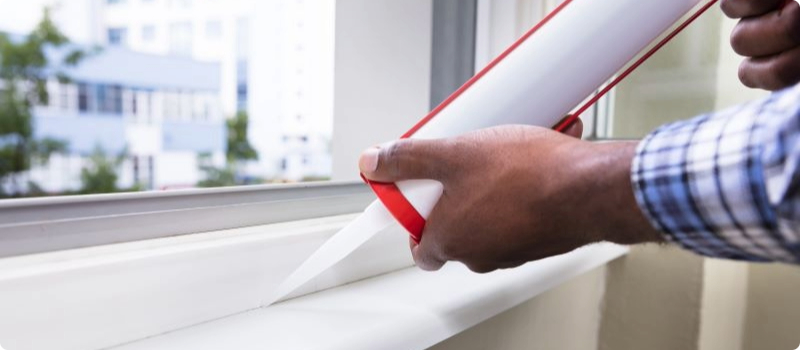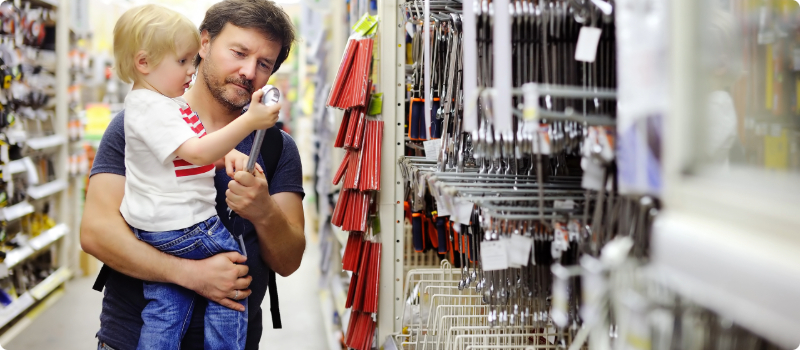Fall home maintenance checklist
Updated September 28, 2021 . AmFam Team
Autumn means warm colors, pumpkin carving and holiday preparation. As a homeowner, it also means taking time to clean out gutters and insulate water pipes. So, don’t wait until temperatures plummet to prepare your home for icy weather. Use our handy fall home maintenance checklist to help you prepare your home for colder weather.
1. Insulate water pipes
Few things are worse than waking up to frozen water pipes — and it could get worse if the pipes crack or burst as they thaw. So, if you’re worried about freezing pipes this winter, follow these steps in the fall to avoid the mess:
- Seal holes, cracks, or crevices around the home where cold air leaks in
- Apply foam-rubber insulation to exposed pipes or pipes in unheated locations; wrap the corners and elbows, too
- Keep cabinet doors open on severely cold nights
2. Clean the gutters
A few leaves piling up along the roof might not seem like a problem, but it can lead to serious issues. If water doesn’t drain away from your home, cracks can form in your foundation, siding can rot and your basement can flood. Climb up there while temperatures are comfortable during the fall and clear out the debris. If you don’t want to do this yourself, you can hire someone to help.
While you’re up there, be sure to check for loose shingles and flashing. A wet winter’s night is not the time to discover that the roof over your bed is leaking.
3. Sweep the chimney
If you have a wood-burning fireplace and haven’t had your chimney cleaned, this is a must-have item on your fall checklist because it’s time to get it swept out. This removes the soot from last year, makes sure you won’t smoke out nesting guests and keeps it safe for another season.
If you’ve never had your fireplace cleaned and inspected, call a professional chimney sweep. They’ll check that creosote hasn’t built up to dangerous levels and make sure the lining or masonry are intact. Relaxing near the fire will be easier when you know that its smoke and sparks have a safe path out of your home.

4. Weatherize your space
Simple upgrades will help keep your family warmer this winter, and fall is the perfect time to get them done. Try some of these simple tasks to prepare your home for fall and winter:
- Add weather-stripping and caulk to old windows and doors
- Beef up the insulation in your attic and crawlspace
- Install radiator panels to walls behind radiators
- Clean the chimneys on any fireplaces
- If you can, trade drafty old windows for double-paned replacements and add a layer of solar film to let in the winter sun without letting in harmful UV rays
5. Schedule an HVAC inspection
Stay warm and cozy this winter by having a professional complete a maintenance check during the fall on your heating and cooling systems, vents, and ductwork at least annually. This can keep you safe from carbon monoxide, mold spores and other allergens.
An HVAC professional will perform a variety of checks, including:
- Changing the filter
- Lubricating moving parts
- Testing the voltage
- Inspecting the thermostat
- Checking the start-up and shut-down controls

6. Check for drafts
Checking for drafts in your home is a simple way to ensure you’re efficiently keeping your home warm. The first thing you need to do is to turn off any appliances that may cause an air disturbance — ceiling fans, the stove, etc. Next, use a long-stemmed match or a stick of incense and slowly patrol your home. When you notice a disturbance in the flame, then you’ve found a draft. What you use to remedy the draft varies widely, but it shouldn’t be an expensive fit. Plus, you’ll save some money on your heating bill too!
7. Drain your sprinkler system
Unless your sprinkler system has a self-draining feature, you need to drain your sprinkler system every fall to ensure there isn’t any water remaining in the system. What could be a harmless amount of water can ruin your underground pipes if it freezes.
If you’re uncertain if your sprinkler system has a self-draining mechanism, the best way to find out is to look at the sprinkler heads. Self-draining sprinklers have check valves on them.
To drain your sprinklers manually, first shut off your water completely. Next, locate your valve’s drain cap and open the valve to drain the last bits of water remaining. Sprinkler systems vary widely, so we suggest you hire a professional to take of this unless you know for certain what you’re doing.
8. Care for trees and shrubs
If you’ve spent time in the warmer months taking care of your yard, you’ll have less to worry about during the winter and can use that extra time to watch football or hang out with your family more. Nevertheless, walking through your property and removing wayward branches on trees and overgrown shrubs is important because they could be an issue once a freeze strikes.

9. Stock up on winter supplies
Now is the best time to stock up on all the winter supplies you’ll need once those temperatures begin to drop. Oftentimes, there might be sales in your area you can take advantage of, too. But having a stockpile of wood to burn, a good axe and other winter items is a great idea, especially if you live in an area where winters are ruthless. If you don’t stockpile items now, you might be wishing you had once winter strikes and you’re snowed in.
10. Clean dryer vents
This is an often-overlooked potential fire hazard that is quite easy to prevent. It’s up to you how often you do this, but it’s wise to periodically check your clean dryer vents to make sure they don’t have any lint building up. Lint is extremely flammable and many house fires each year are caused by someone’s negligence when it comes to keeping their dryers clean. This will also extend the life of your dryer, as a clogged vent makes the engine work that much harder.

Have your fall maintenance checklist ready? Let’s get started!
Slip on a sweater and try these simple home repairs while the weather is still hospitable. With these handy fall home maintenance tips in mind, we hope you’ll head outside to do a visual inspection on your home: roof, gutters, siding, windows, doors and garage. If needed, call in a pro to check out the important systems to make sure your home is winter proof.
Following this fall maintenance checklist can help protect your home from costly damage down the line, but for more protection, you’ll want to make sure your home is protected from the unexpected with homeowners insurance.
This article is for informational purposes only and based on information that is widely available. We do not make any guarantees or promise any results based on this information.
*Customers who bundle home and auto insurance policies may save up to 23% on both policies together (as of December 2023). Discounts may vary by state, property, policy form and company underwriting the home and/or auto policy. Discounts may not apply to all coverages on a home or auto policy.

